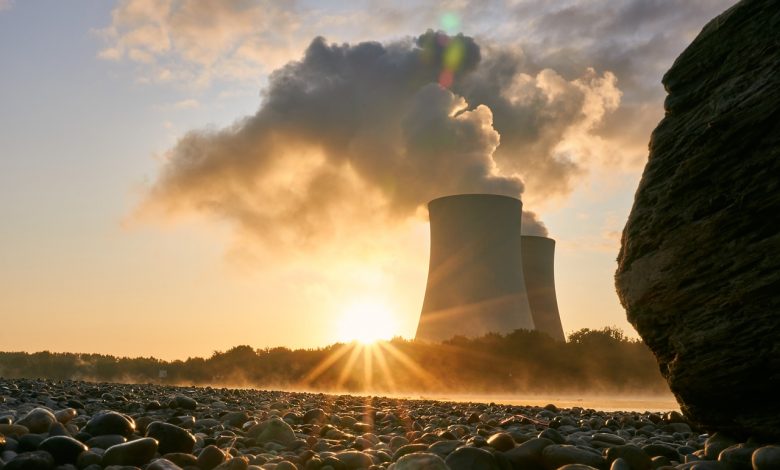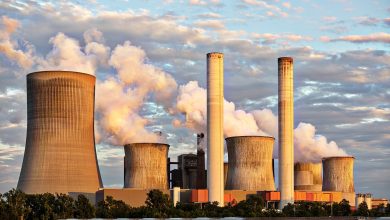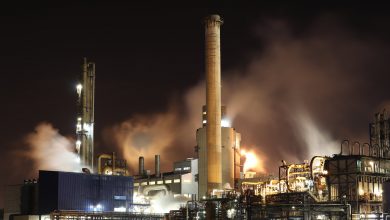Nuclear Power or Fossil Fuels? The Debate Continues

Global Energy Demand
The global demand for energy has grown significantly over the past few decades. Recent energy demand forecasts from the U.S. Department of Energy highlight how explosive economic growth in developing countries like Brazil, China, India, and Indonesia will create a tremendous strain on global energy reserves, causing overall energy consumption to double by 2040 (Cusick, 2016). While the U.S. Energy Information Administration anticipates that fossil fuels like coal, oil, and natural gas will continue to lead the way as the primary sources of global energy in the coming decades, there are other sources of energy than cannot be overlooked. Since 2015, nearly 72 percent of newly added energy resources have come as a result of renewable energy generation rather than fossil fuels (Givetash, 2020). While renewables have started to make waves within the energy industry, nuclear power is also still a significant part of the global energy portfolio. However, the debate about the future of nuclear energy has been gaining steam in recent years.
As the consequences of increasing levels of greenhouse gas emissions continue to become progressively more visible, some energy experts and even environment advocates have been calling for new efforts to examine the expansion of nuclear energy. It is clear the climate change is becoming an urgent threat for both humanity and the natural environment. While burning fossil fuels releases greenhouse gas emissions into the atmosphere, the production of nuclear power does not emit greenhouse gas emissions. However, nuclear power generation does produce an extremely toxic byproduct known as nuclear waste. Moreover, after a series of catastrophic nuclear power plant meltdowns over the course the history, the overall safety of nuclear power generation has come into question.

The Fukushima Disaster
The most recent nuclear power disaster occurred with the Fukushima nuclear crisis in 2011. In March 2011, an earthquake struck off the coast of Japan and triggered a tsunami that killed nearly 16,000 people. This tsunami also impacted the Fukushima nuclear power plant, causing a massive nuclear meltdown. Thousands of tons of radioactive waste were released from the seriously damaged nuclear plant into the Pacific Ocean (Grossman, 2011). This nuclear disaster shaped new global concerns about how nuclear power plants and radioactive waste could adversely impact human health and marine ecosystems. While Japan took many precautionary steps to limit the spread of radioactive material throughout the environment, environmental experts say that lasting damage will impact environmental systems for the foreseeable future. Following this incident, Japanese political leaders took dramatic steps to shut down all of the country’s 54 nuclear power plants.
The Fukushima nuclear power plant disaster may have been a turning point for nuclear energy. New debates around the world have erupted about the future of using nuclear fission to generate power. This debate is even happening in small New England communities like Vernon, Vermont, where a nuclear power plant that once generated about 72 percent of all electricity in Vermont was shut down over safety concerns. In his book Public Meltdown, researcher and author Richard Watts conveys two powerfully contrasting storylines about the Vermont Yankee nuclear power plant.

Nuclear Energy Debate
On one side of the debate, there were the Vermont Yankee supporters who conveyed that this nuclear power plant generated much more than just electricity. They continued to emphasize that this establishment produced vital economic benefits to Vermont and the surrounding communities without emitting harmful greenhouse gases. On the other hand, the opponents of Vermont Yankee argued that this power plant was outdated, unsafe, and owned by Entergy, an untrustworthy out-of-state company. Public Meltdown effectively depicts how these two conflicting narratives influenced potential policy outcomes, which also can be portrayed in other energy dilemmas such as the debate over the use of some forms of renewable energy.
The Vermont Yankee nuclear power plant’s initial 40-year license expired in March 2012. Even though the license agreement had expired, that plant continued to operate because of a series of lawsuits and debates regarding a 20-year license agreement. The opponents wanted the plant to close because of numerous issues regarding the owners of the plant, the archaic design, and more importantly, the safety of the power plant. On August 21, 2007, a cooling tower collapse at Vermont Yankee ignited fierce concerns about the overall safety of the obsolete nuclear plant. This incident sparked the involvement of numerous consumer and environmental advocacy organizations, which played a critical role in spreading the news about Vermont Yankee’s ailing reliability.
Consequently, this resulted in a dramatic negative decline in public opinion towards the power plant. People started to wonder what the condition of the complex nuclear reactor was like if something as simple as a cooling tower could just collapse out of nowhere. However, the situation became even more unsettled for Vermonters when it was revealed that Entergy had lied about the existence of underground pipes that carried radioactive substances under Vermont Yankee. Opponents jumped on the opportunity to expose to the general public that not only was there an antiquated and simply unreliable power plant on Vermont soil, but there was one that was owned by a deceitful corporation. Challengers of Vermont Yankee found this combination of unreliability and dishonesty to be a recipe for disaster.

Economic Benefits of Nuclear Power
Even though the plant’s reliability had come under scrutiny and its owners had been moderately deceiving, many people still supported the Vermont Yankee nuclear power plant. Supporters argued that if the plant were unsafe, why would the Nuclear Regulatory Commission approve a license extension to 2032? Much emphasis has also been put on the economic benefits that the plant brought to Vermont. If the power plant were to continue to generate electricity for another 20 years, it would bring an estimated $2 billion in additional income for Vermont residents and $300 million in increased tax revenues for the state (Entergy Corporation, 2012).
In uncertain economic times, the additional money that came to Vermonters from this power plant was essential. Vermont Yankee enthusiasts didn’t just highlight the economic benefits that the plant brought to the state, but they also conveyed the negative impacts of a future without the plant. State economists have determined that closing Vermont Yankee would cause 1,000 job losses and cost Vermont’s economy more than $60 million each year (Watts, 2012). Additionally the closing of the plant would cause the state to have to find a new source of electric power to make up for nearly one-third of the electricity which was provided to Vermont by the small nuclear plant in Vernon (Entergy Corporation, 2012). The last key benefit that the supporters transcended was the fact that nuclear power generates electricity without the emissions or pollutants such as sulfur dioxide, nitrogen oxides, and greenhouse gases that come from the burning of fossil fuels (Entergy Corporation, 2012).

Renewable Debate
In many ways, the Vermont Yankee deliberations correspond similarly to the debate over wind power generation. Wind power generation has supporters that argue for wind power because it provides clean energy, is a sustainable income for the people who host turbines on their properties, creates jobs, and is abundant and reliable (DOE, 2020). The wind power industry also has opponents that claim electricity generation from wind turbines causes noise disturbances, is a threat to wildlife, is not reliable, and causes a significant visual impact. This is an example of another energy issue that has conflicting storylines that hinder the overall decision-making processes. The potential policy outcomes for the debate over power generation and the future of Vermont Yankee were delayed by differing opinions and storylines. It’s difficult to achieve an outcome when there is always an opponent to what is trying to be completed.
Decommissioning
After a few more years of debate, the Vermont Public Utility Commission ultimately voted to deny Entergy Corporation the permit need to relicense the Vermont Yankee nuclear power plant. The power plant was officially shut down on December 29, 2014. While the power plant has ceased operations, the decommissioning process isn’t expected to be completed until 2030. Toxic nuclear waste still needs to be carefully removed from the abandoned power plant. The issue of nuclear waste disposal has been a hotly contested subject. In 2016 alone, energy analysts say that about 8,910 tons of radioactive nuclear waste was generated from nuclear power plants all around the world (Lewis, 2017). Waste disposal is a key factor in the ongoing debate about the future of nuclear power. Until a consensus is reached about how to safely store nuclear waste away from humans or environmentally sensitive areas, nuclear power advocates will continue to struggle to make progress within the global portfolio of energy resources.

Nuclear, Renewables, and Fossil Fuels
According to energy data from the U.S. Department of Energy, nearly 20 percent of U.S. electricity generated in 2016 came from nuclear power plants. These plants operated at an average capacity factor of just over 92 percent, which meant that they were producing electricity at full power for 336 of the 365 days per year (Rhodes, 2018). To put this into context, U.S. hydroelectric systems operated with an average capacity factor of 38 percent, U.S. wind turbines were at 34.5 percent, and U.S. solar arrays were only at 25 percent (Rhodes, 2018). These figures from the U.S. Department of Energy show that nuclear power wins when it comes to overall reliability.
Another debate about nuclear energy highlights the potential impacts of not producing electricity from nuclear power plants. After Japan closed down all of the country’s 54 nuclear power plants, fossil fuel energy imports surged by 85 percent, which caused oil, coal, and natural gas consumption to skyrocket in Japan (Conca, 2019). While Japan eventually restarted some of its nuclear power plants, the pollution and greenhouse gas emissions from the imported fossil fuels caused immediate harm to the environment and human health. Research led by Makiko Sato and Pushker Kharecha of the Columbia University Earth Institute has revealed how Western Europe and the United States could annually avoid roughly 100,000 premature deaths and nearly 7.7 billion tons of greenhouse gas emissions if policy makers moved forward with efforts to reduce energy generation from coal power plants rather than nuclear power plants (Kharecha & Sato, 2019).
The global power debate between renewables, nuclear power, and fossil fuels is set to intensify in the coming years as the demand for energy continues to grow. While fossil fuels are abundant and relatively inexpensive, concerns about greenhouse gas emissions and air pollution have created a surge of interest in renewables and nuclear power. However, both renewables and nuclear power also have their own strengths and weaknesses. While nuclear power is often left out of the clean energy debate, some energy analysts say that nuclear power may be the only option to save the planet from rising greenhouse gas emissions.
Sources
Conca, J. (2019). “Shutting Down All of Japan’s Nuclear Plants After Fukushima Was A Bad Idea.” Forbes.
Cusick, D. (2016). “Fossil Fuels May Not Dwindle Anytime Soon.” Scientific American.
DOE. 2020. “Advantages and Challenges of Wind Energy.” U.S. Department of Energy.
Entergy Corporation. (2012). “Vermont Yankee Nuclear Power Plant.” Entergy Nuclear Entergy Corporation.
Givetash, L. (2020). “Cheap oil? A pandemic? No big deal for renewable energy, experts say.’ NBC News.
Grossman, E. (2011). “Radioactivity in the Ocean: Diluted, But Far from Harmless.” Yale Environnent 360.
Kharecha, P., & Sato, Makiko. (2019). “How Energy Choices After Fukushima Impacted Human Health and the Environment.” Columbia University Earth Institute.
Lewis, G. (2017). “Fossil Fuel vs. Nuclear Energy.” Stanford University.
Rhodes, R. (2018). “Why Nuclear Power Must Be Part of the Energy Solution.” Yale University School of Forestry & Environmental Studies.
Watts, R. (2012). “Richard Watts: Just another day.” Burlington Free Press.
Watts, R. (2012). “Public Meltdown: The Story of the Vermont Yankee Nuclear Power Plant.” White River Press.



